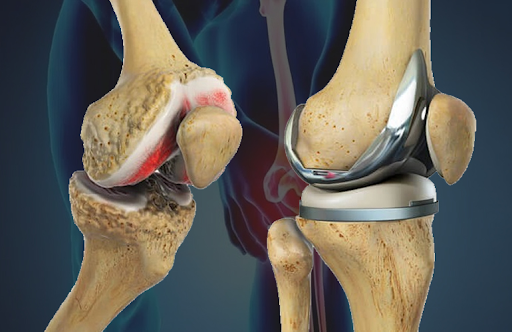Perimenopause: Signs, Age, and Treatment Options

Perimenopause is a natural phase in a woman’s life that signals the transition towards menopause. It is a time of hormonal changes that can bring about various symptoms, and understanding these changes is key to managing them effectively. This article will discuss how to recognize perimenopause, the typical age it starts, and the best treatment options.
How Do I Know If I Am in Perimenopause?
Perimenopause is marked by hormonal fluctuations, primarily the gradual decline of estrogen levels. Recognizing the signs of perimenopause can help you manage the symptoms and seek appropriate treatments if necessary.
1. Irregular Periods
One of the most common indicators of perimenopause is a change in menstrual cycles. Periods may become shorter, longer, lighter, or heavier. Some women experience skipped periods altogether.
2. Hot Flashes and Night Sweats
Hot flashes, which are sudden feelings of warmth, particularly in the upper body, are a hallmark of perimenopause. These may also occur at night, leading to night sweats and disrupted sleep.
3. Mood Swings
Fluctuating hormone levels can lead to mood changes, including irritability, anxiety, or even depression. Some women may also notice an increase in PMS-like symptoms during this time.
4. Sleep Disturbances
Insomnia or trouble staying asleep is a common complaint during perimenopause. Hormonal changes, night sweats, and stress can all contribute to sleep problems.
5. Vaginal Dryness
Reduced estrogen levels during perimenopause can cause vaginal dryness, which may lead to discomfort during intercourse or other daily activities.
6. Decreased Fertility
Although women in perimenopause may still have periods, fertility declines significantly during this phase due to irregular ovulation.
At What Age Does Perimenopause Start?
The onset of perimenopause varies from woman to woman, but it generally begins in the mid to late 40s. However, it can start as early as the late 30s for some women. The duration of perimenopause can last anywhere from a few months to several years, with the average being about four years before transitioning to menopause.
1. Early Perimenopause
Some women may notice the signs of perimenopause in their late 30s or early 40s. Early onset is typically influenced by factors such as genetics, lifestyle, or certain medical conditions.
2. Late Perimenopause
For others, perimenopause may not start until their mid or late 40s. The experience of symptoms and the transition to menopause can vary widely depending on individual health and hormonal changes.
Who Is a Premenopausal Woman?
The term “premenopausal” refers to a woman who is still having regular menstrual cycles and has not yet entered perimenopause. A premenopausal woman has normal reproductive hormone levels, and the ovaries continue to release eggs on a regular basis.
1. Differences Between Premenopausal and Perimenopausal Women
While a premenopausal woman still has predictable periods and regular ovulation, a perimenopausal woman begins to experience irregular periods, signaling the body’s gradual shift towards menopause. The hormonal changes in perimenopause can lead to a range of symptoms, which are typically not present in premenopausal women.
2. Transition Phase
Premenopause is the reproductive phase before perimenopause. Once a woman starts experiencing changes in her menstrual cycle and other symptoms like hot flashes, she is considered perimenopausal.
What Is the Best Treatment for Perimenopause?
While perimenopause is a natural phase of life, some women may seek treatment to manage the symptoms, especially if they significantly impact daily life. There are several treatment options available depending on the severity of symptoms and personal health preferences.
1. Lifestyle Changes
Simple lifestyle modifications can help alleviate many perimenopausal symptoms. Maintaining a balanced diet, engaging in regular physical activity, and practicing stress management techniques can improve mood, energy levels, and overall well-being.
2. Hormone Replacement Therapy (HRT)
Hormone replacement therapy is one of the most effective treatments for severe perimenopausal symptoms. HRT works by replenishing estrogen levels, helping to alleviate hot flashes, mood swings, and vaginal dryness. However, it is not suitable for everyone, and women should consult their doctor to weigh the benefits and risks.
3. Non-Hormonal Medications
For women who cannot or prefer not to use hormone therapy, non-hormonal medications such as antidepressants, blood pressure medications, or herbal supplements may help manage symptoms like hot flashes and mood swings.
4. Vaginal Estrogen
For those experiencing vaginal dryness or discomfort, low-dose vaginal estrogen treatments are available in the form of creams, tablets, or rings. This localized treatment can help relieve symptoms without affecting the entire body.
5. Calcium and Vitamin D
As estrogen levels drop, women may be at higher risk for bone loss. Taking calcium and vitamin D supplements can help maintain bone density and prevent osteoporosis during and after perimenopause.
Conclusion
Perimenopause is a natural transition that occurs in every woman’s life, typically beginning in the 40s, though it can vary. Recognizing the signs of perimenopause—such as irregular periods, hot flashes, and mood changes—can help you manage the symptoms more effectively. While lifestyle changes, hormone therapy, and non-hormonal treatments can provide relief, it’s essential to consult a healthcare provider to choose the best treatment options for your specific needs.







